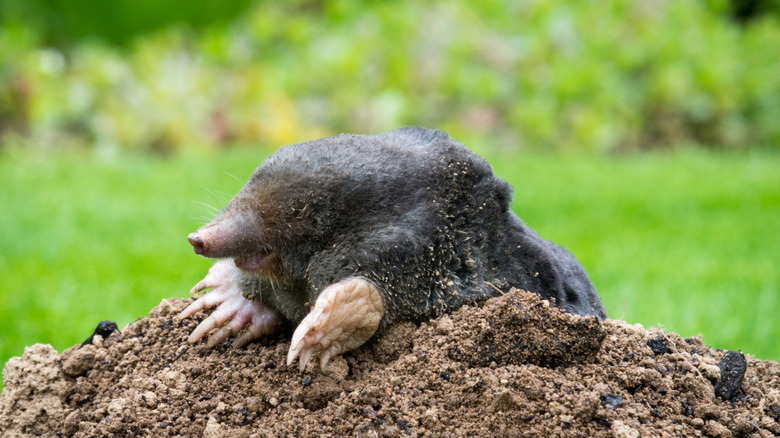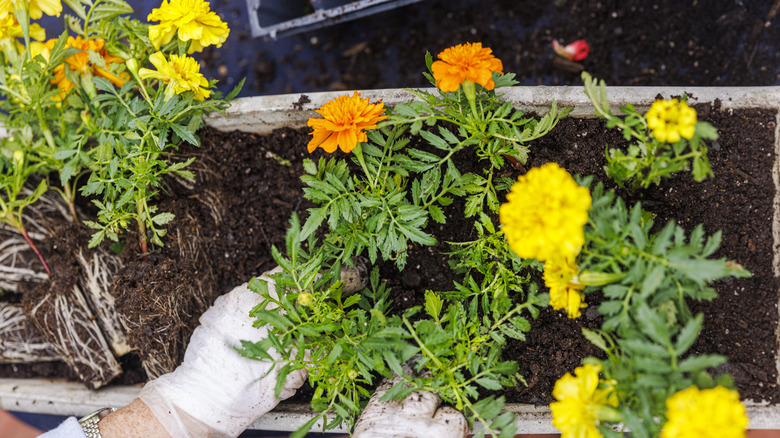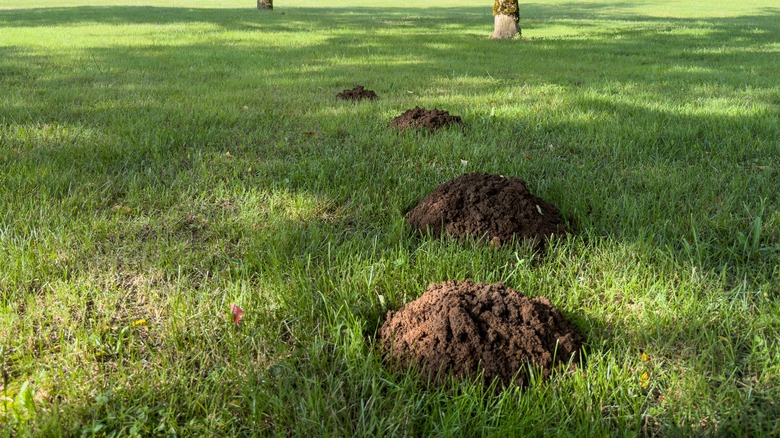Are Marigolds Really The Secret To Keeping Moles Out Of Your Garden?
Moles, those industrious little mammals, may be rather cute in photos, animated movies, or on a documentary, but they're significantly less charming when they're destroying your lawn or garden. While moles don't intentionally damage or eat plants, their digging can quickly turn a beautiful garden or yard into an expanse of mole hills and holes. Gardeners who want mole-free yards have turned to a variety of techniques to get rid of the little critters. One popular strategy is to use marigolds to repel moles.
While marigolds (Tagetes spp.) have long been touted for their anti-mole properties, there is little to no scientific testing behind this. It's not just moles either: using marigolds as pest control is a touted to repel a variety of insect and mammalian pests. Unfortunately, the only garden pest marigolds have been scientifically proven to deal with are nematodes. The plants actually release a chemical that is toxic to the pests. That doesn't mean marigolds aren't worth growing in your garden though.
Growing marigolds in your garden
If you decide to try growing marigolds anyway, either to run your own mini-experiment on their mole-repelling abilities or just to enjoy their pretty flowers, you're in for a treat. While marigold's pest deterrent properties are debatable, their beauty and charm isn't. The easy-to-grow flowers are available in a wider variety of colors than you might expect, and come in a range of creams, yellows, peaches, oranges, and reds. Depending on the specific type of marigold, they can range in height from 6 inches to about 3 feet. So grab a shorter variety if you're planning to use them as a border.
Marigolds are widely available in garden centers as young plants, but they are also quite easy to grow from seed. They thrive in full sun and need well-draining soil to grow their best. Conveniently, they don't require much fertilizer to grow well, and as long as you deadhead them, they can flower all summer and well into fall.
Dealing with moles in your yard
If your marigold experiment fails to rid your yard of moles, you'll have to look into other ways of dealing with the little rodents. One option, especially if the damage is minor, is to simply let the moles be. It turns out that moles can be quite beneficial to have around, as they are insectivores and feast on grubs, beetles, and other insects that might otherwise eat your plants' roots.
If the moles' damage is too extensive for you to leave them alone, your best bet may be to fence off areas that you want to keep free of moles. The fence will have to go at least a foot deep to prevent the moles from tunneling through. There are also poison baits that target moles, though they should be used with caution as they can potentially harm pets and other animals. More natural castor oil-based pesticides may or may not be effective as well. While there are a variety of home remedies for dealing with moles in the garden, most are either ineffective or have little research to back them up.


